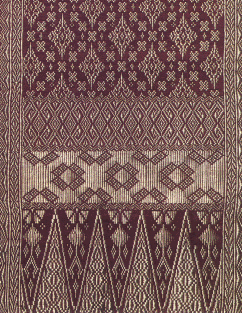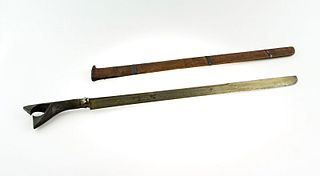
Sumatra is one of the Sunda Islands of western Indonesia. It is the largest island that is fully within Indonesian territory, as well as the sixth-largest island in the world at 473,481 km2 (182,812 mi.2), not including adjacent islands such as the Simeulue, Nias, Mentawai, Enggano, Riau Islands, Bangka Belitung and Krakatoa archipelago.

Malay is an Austronesian language officially spoken in Indonesia, Brunei, Malaysia and Singapore and unofficially spoken in East Timor and parts of Thailand. It is spoken by 290 million people across the Malay world.

Riau is a province of Indonesia. It is located in the central eastern coast of Sumatra along the Strait of Malacca. Until 2004 the province included the offshore Riau Islands, a large group of small islands located east of Sumatra Island and south of Singapore, before these islands were split off as a province in July 2004. The provincial capital and the largest city of Riau is Pekanbaru. The province shares land borders with North Sumatra to the northwest, West Sumatra to the west, and Jambi to the south. The total area for Riau province is 87,023.66 square kilometres (33,600.02 sq mi), which stretches from the slopes of the Bukit Barisan to the Strait of Malacca. Riau has a wet tropical climate with average rainfall ranging between 2000 and 3000 millimeters per year, and the average rainfall per year is about 160 days. Riau is currently one of the richest provinces in Indonesia and is rich in natural resources, particularly petroleum, natural gas, rubber, palm oil and fibre plantations. Extensive logging and plantation development in has led to a massive decline in forest cover Riau, and associated fires have contributed to haze across the larger region.

Malays are an Austronesian ethnic group native to the eastern Sumatra, Malay Peninsula and coastal Borneo, as well as the smaller islands that lie between these locations — areas that are collectively known as the Malay world. These locations are today part of the countries of Malaysia, Indonesia, southern part of Thailand, Singapore and Brunei Darussalam.

Minangkabau is an Austronesian language spoken by the Minangkabau of West Sumatra, the western part of Riau, South Aceh Regency, the northern part of Bengkulu and Jambi, also in several cities throughout Indonesia by migrated Minangkabau. The language is also a lingua franca along the western coastal region of the province of North Sumatra, and is even used in parts of Aceh, where the language is called Aneuk Jamee.

South Sumatra is a province of Indonesia. It is located on the southeast of the island of Sumatra, The province spans 91,592.43 km2 (35,364 sq mi) and had a population of 8,467,432 at the 2020 Census. The capital of the province is Palembang. The province borders the provinces of Jambi to the north, Bengkulu to the west and Lampung to the south. The Bangka Strait in the east separates South Sumatra and the island of Bangka, which is part of the Bangka Belitung Islands province. This province is rich in natural resources, such as petroleum, natural gas and coal. The province is inhabited by many different ethnic groups, with Palembang people the largest ethnic group. Most speak Palembang Malay, which is mutually unintelligible to both Indonesian and Standard Malay. Other ethnic groups include the Javanese, Sundanese, Minangkabau and Chinese. Most are concentrated in urban areas and are largely immigrants from other parts of Indonesia.

Bengkulu is a province of Indonesia. It is located on the southwest coast of Sumatra. It was formed on 18 November 1968 by separating out the former Bengkulu Residency area from the province of South Sumatra under Law No. 9 of 1967 and was finalized by Government Regulation No. 20 of 1968. Spread over 19,813 km2, it is bordered by the provinces of West Sumatra to the north, Jambi to the northeast, Lampung to the southeast, and South Sumatra to the east, and by the Indian Ocean to the northwest, south, southwest, and west.

Jawi is a writing system used for writing the Malay language and several other languages of Southeast Asia, such as Acehnese, Banjarese, Kerinci, Minangkabau, Tausūg and Maguindanao. Jawi is based on the Arabic script, consisting of all of the original 28 Arabic letters, and five additional letters constructed to fit the phonemes native to Malay, and an additional phoneme used in foreign loanwords, but not found in Classical Arabic, which are ca, nga, pa, ga, va, and nya.

The kris or keris in the Indonesian and Malay language, is an asymmetrical dagger with distinctive blade-patterning achieved through alternating laminations of iron and nickelous iron (pamor). Of Javanese origin, the kris is famous for its distinctive wavy blade, although many have straight blades as well, and is one of the weapons commonly used in the pencak silat martial art native to Indonesia.

Malay houses refer to the vernacular dwellings of the Malays, an ethno-linguistic group inhabiting Sumatra, coastal Borneo and the Malay Peninsula.

A kalis is a type of double-edged Filipino sword, often with a "wavy" section. The kalis has a double-edged blade, which is commonly straight from the tip but wavy near the handle. Kalis with fully straight or fully wavy blades also exist. It is similar to the Javanese keris, but differs in that the kalis is a sword, not a dagger. It is much larger than the keris and has a straight or slightly curved hilt, making it primarily a heavy slashing weapon.

Songket is a Tenun fabric that belongs to the brocade family of textiles of the Malay world. It is hand-woven in silk or cotton, and intricately patterned with gold or silver threads. The metallic threads stand out against the background cloth to create a shimmering effect. In the weaving process the metallic threads are inserted in between the silk or cotton weft (latitudinal) threads in a technique called supplementary weft weaving technique.
The regalia of Malaysia includes all the items which are deemed sacred and symbolic of the supremacy and authority of the Yang di-Pertuan Agong or the Supreme King of Malaysia and his consort, the Raja Permaisuri Agong. The installation of the Supreme King is a very special ceremony. Only on this particular day are the masses able to see his regalia. Several of these are Malaysian National Treasures since 2009.

Malay Indonesians are ethnic Malays living throughout Indonesia. They are one of the indigenous peoples of the country. Indonesian, the national language of Indonesia, is a standardized form of Riau Malay. There were numerous Malay kingdoms in what is now Indonesia, mainly on the islands of Borneo and Sumatra. These included Srivijaya, the Melayu Kingdom, Dharmasraya, the Sultanate of Deli, the Sultanate of Siak Sri Indrapura, the Riau-Lingga Sultanate, the Sultanate of Bulungan, Pontianak Sultanate, and the Sultanate of Sambas. The 2010 census states that there are 8 million Malays in Indonesia, this number comes from the classification of Malays in East Sumatra and the coast of Kalimantan which is recognized by the Indonesian government. This classification is different from the Malaysia and Singapore census which includes all ethnic Muslims in the Indonesian archipelago as Malays.

The tekpi is a short-handled trident from Southeast Asia. Known as tekpi in Malay, it is called chabang or cabang in Indonesian, siang tépi in Hokkien, and trisul in Thai. More than a weapon, it was also important as a Hindu-Buddhist symbol. It is comparable to the Okinawan Sai.

Sikin Panjang is a sword originated from northern Sumatra, Indonesia.

A Piso Halasan is a traditional sword of the Batak people from North Tapanuli Regency, North Sumatra, Indonesia.
The Indonesian Malaysians, also known as Anak Dagang are Malaysian citizens of Indonesian ancestry. Today, there are many Malaysian Malays who have lineage from the Indonesian archipelago and have played an important role in the history and contributed to the development of Malaysia, they have been assimilated with other Malay communities and are grouped as part of the foreign Malays or anak dagang in terms of race. The Malaysian census does not categorize ethnic groups from the Indonesian archipelago as a separate ethnic group, but rather as Malays. In Malaysia, the definition of Malay is a person who can speak Malay, is Muslim, and follows Malay traditions and customs, even non-natives who marry Malays and embrace Islam are also accepted as Malays. In Malaysia there is a political trend of trying to put all ethnic groups who speak Malay and happen to be Muslim under one banner - Malay. This is not the case in Indonesia where all ethnic groups have their own cultural identities that are recognized and respected by the government.

Pekasam, Pakasam or Bekasam is a Malay term for fermented food, more precisely fermented fish product. In Malay and Banjar cookery, pekasam usually refers to freshwater fish fermented with salt, palm sugar, toasted rice grains and pieces of asam gelugur.
Minye Tujoh inscription is actually two inscriptions in the form of two tombstones of the same grave, found in Minye Tujoh village, Pirak Timur district, North Aceh Regency, in Aceh, Indonesia. The inscription at the grave's head is written in Arabic language and Jawi (Arabic-type) script, while the one at the feet is written in pre-classical Malay language with Old Sumatran (Indian-type) script. The Malay text was first translated by W.F. Stutterheim (1936) with the help of H. Djajadiningrat, and further refined by G.E. Marrison (1951) and W. van der Molen (2007); the Arabic text was first done by Djajadiningrat and by L. Kalus (2005).





















